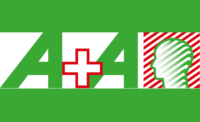Theory of Multiple Intelligences
The theory of multiple intelligences adds another dimension to an already complex classroom. Some of the complexities, like divisions among gender, socio-economic status, age and race, are readily apparent.
The classroom is also divided by the trainer’s perspective of educational psychology. Does the trainer prefer a behaviorist, cognitive, or humanistic teaching style, or maybe a little of each?
Now, the classroom is even further segmented by a new learning theory gaining favor with institutions of higher learning nationwide. The theory of multiple intelligences sees the individual as multifaceted intellect. All of the facets have their own Intelligence Quotient (IQ), and learning preferences.
According to Dr. Howard Gardner, professor of education at Harvard University, these facets, or intelligences, can be identified as follows:
- Linguistic intelligence (“word smart”)
- Logical-mathematic intelligence (“number/reasoning smart”)
- Spatial intelligence (“picture smart”)
- Bodily-Kinesthetic intelligence (“body smart”)
- Musical intelligence (“music smart”)
- Interpersonal intelligence (“people smart”)
- Intrapersonal intelligence (“self smart”)
- Naturalist intelligence (“nature smart”)
One might mistakenly compare the theory of multiple intelligences with aptitude testing, the type of tests given to high-school seniors and military recruits. Aptitude and IQ test only result in placing employees into intellectual categories. These tests often stereotype employees and limit their exposures and opportunities. Traditional testing does not foster the free exchange of ideas between disciplines, or promote creative problem solving. The chance to maximize employee potential is often lost within this segregation.
The theory of multiple intelligences has strong implications for adult learning and development at both the academic and corporate training levels. Many adults find themselves in jobs that do not make the best use of their interest and intelligences. For instance the “logical-mathematical” engineer may have a greater linguistic/interpersonal intelligence quotient, thereby making him, or her, a potentially brilliant salesperson while being only a mediocre engineer. The employee with superior spatial intelligence may be so lacking in intrapersonal intelligence that they become social outcasts rather than an accomplished artist.
The greatest advantage of multiple intelligence training is that employees have several opportunities to receive the trainer’s message. Trainers can present material to employees according to their learning quotient (i.e., linguistic, spatial, musical, etc.). The theory does not require that all materials be presented in eight different ways; but only that the most effective learning pathways are included in a presentation to facilitate learning for the greatest number of employees.
Dimensions of Learning
The theory of multiple intelligences has numerous comparative theories. Dimensions of Learning is one such theory. Its premise is that there are five types of thinking ---what researchers and theorist call dimensions of learning --- essential to successful learning.
These dimensions are:
- Attitudes and Perceptions
- Acquire and Integrate Knowledge
- Extend and Refine Knowledge
- Use knowledge Meaningfully
- Productive Habits of Mind
Attitudes and Perceptions affect the employee’s ability to learn. Employees who see the classroom as an unstructured or as a less than serious environment will put little effort into the learning task. Therefore, a key element to effective instruction is helping to establish positive attitudes and perceptions about learning, and for the trainer to effectively promote a structured and serious learning environment.
It is always helpful to guide employees in relating newly acquired knowledge with what they already know. The trainer can accentuate learning by helping the employee process and organize the new information, and then committing it to long term memory by modeling the skill and then practicing it so that it can be easily preformed.
Learners usually exhibit the process of extending and refining knowledge when they begin to analyze the knowledge, make new distinctions, clear up misconceptions, and reach conclusions.
Trainers can safely say that learning has occurred when we see employees applying knowledge to perform meaningful tasks. This is evident by the employee’s independent decision making, problem solving, invention, investigation, experimental inquiry, or system analysis. Making sure that employees have an opportunity to use knowledge meaningfully is one of the most important parts of planning a unit of instruction.
The most effective learners are those who have developed powerful learning habits or self-discipline. They can be identified by their habitual critical thinking, creative thinking, and their propensity for self-regulated thinking. It is important to remember that the five dimensions of learning work together and not in isolation, and that the theory was primarily created as a model for planning curriculum and assessments.
Accelerated Learning Programs
These programs are a marketer’s dream. They cater to our society’s value of immediate gratification and the “I need it now” syndrome. Commercial accelerated learning programs promise memory improvement in as little as 10 days, or becoming fluent in a foreign language in as little as ten weeks. Most are predicated on the “feel good” elements of select theories of education. For instance, the idiom that trainers should always promote a positive and encouraging culture in the classroom is challenged by a recent report suggesting that indiscriminate use of praise reduces student achievement by leading them to believe that mediocre work is really excellent. Too much praise lowers their aspirations.
Accelerated learning theorists also contend that relaxed students are more likely to learn. But recent studies show that employees who are too “laid back” may be just as unlikely to learn as employees who are terrified. Many of the most prestigious learning institutions have reverted to the philosophy that “the tougher it is, the more you will value it” for freshmen and sophomore students. These institutions argue that a “positive culture” is a product of learning, and not a route to it. This challenges many trainers who see part of their role as entertainer, and who believe that learning will occur as long as you make it fun. As J.S. Atherton has stated, “Learning is not mindless fun. It is hard work. It does not have to be miserable work, but any denial of the work aspect inevitably compromises standards.”
Accelerated learning theories certainly have a place in corporate training, but they are not replacements for proven training techniques, and they can only work when supplemented with advanced educational theory and practices.
Collaborative Learning
Collaborative learning is the grouping of employees for the purpose of achieving a learning goal. The philosophy is simple: two heads are always better than one. The employees are responsible for the group’s learning task, as well as their own.
Practitioners of collaborative learning say that the active exchange of ideas within small groups increases student interest and promotes critical thinking. Studies show that cooperative teams obtain higher levels of thought and retain information longer than employees who work as individuals.
Most of the research into the advantages of collaborative learning has been done at the primary and secondary grade levels. There has been little research as to its effectiveness at the college level.
Regardless, collaborative learning is compatible to the emphasis on teamwork within the workforce. Workers need to be creative problem solvers, and learn to make decisions as a team; therefore, the development of critical-thinking skills through collaborative learning should be one of the primary goals of technical education.
Conclusion
Today’s corporate classroom is a diverse and highly complex learning environment. The trainer must be ready to recognize an employee’s abilities as well as their disabilities, and present materials in alternative ways to benefit multiple learning styles. Trainers are not expected to utilize all of these theories; but, to pick and choose, according to their comfort level, training styles and theories that will serve the greatest number of employees.
Works Cited
Anuradha A. Gokhale, Copyright, 1995, Journal of Technology Education ISSN 1045-1064 http://scholar.lib.vt.edu/ejournals/JTE/jte-v7n1/gokhale.jte-v7n1.html Accessed: 25 October 2005
Atherton J.S. (2002) Heterodoxy: Against a positive learning environment [On-line] UK; Available: http://www.doceo.co.uk/heterodoxy/positive.htm Accessed: 25 October 2005
University of Pennsylvania, No author cited. http://www.dolphin.upenn.edu/~scue/Papers/CIE_Paper_1998/ExpEd.html. Accessed: 26 October 2005
Mid-continent Research for Education and Learning, No author cited. http://www.mcrel.org/programs/dimensions/whathow.asp Accessed: 25 October 2005
Armstrong, Dr. David Thomas, Multiple Intelligences, http://www.thomasarmstronge.com/multiple_intelligences.htm Accessed: 24 October 2005
Charles P. Howes (www.charleshowes.com) is a Senior Safety Engineer and Trainer with Integrated Risk Management Associates, LLC, (www.irmaassociates.com) of Green Bay, Wisconsin. He has over thirty years of experience in industrial safety and security, and is a former adjunct instructor of Technical Communication. Call Integrated Risk Management Associates at 920-432-2222 for more information.


